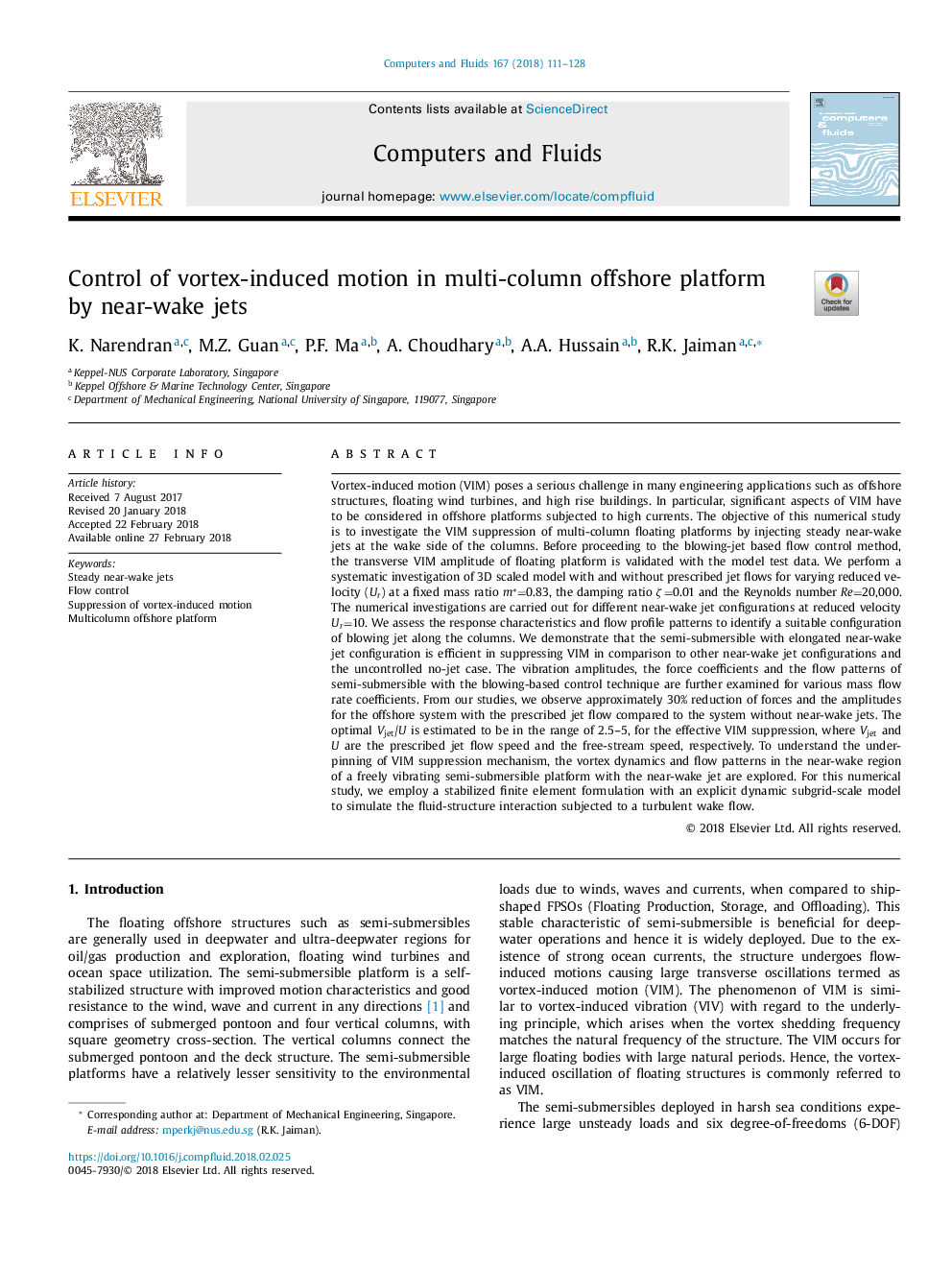| Article ID | Journal | Published Year | Pages | File Type |
|---|---|---|---|---|
| 7156214 | Computers & Fluids | 2018 | 18 Pages |
Abstract
Vortex-induced motion (VIM) poses a serious challenge in many engineering applications such as offshore structures, floating wind turbines, and high rise buildings. In particular, significant aspects of VIM have to be considered in offshore platforms subjected to high currents. The objective of this numerical study is to investigate the VIM suppression of multi-column floating platforms by injecting steady near-wake jets at the wake side of the columns. Before proceeding to the blowing-jet based flow control method, the transverse VIM amplitude of floating platform is validated with the model test data. We perform a systematic investigation of 3D scaled model with and without prescribed jet flows for varying reduced velocity (Ur) at a fixed mass ratio m*=0.83, the damping ratio ζ=0.01 and the Reynolds number Re=20,000. The numerical investigations are carried out for different near-wake jet configurations at reduced velocity Ur=10. We assess the response characteristics and flow profile patterns to identify a suitable configuration of blowing jet along the columns. We demonstrate that the semi-submersible with elongated near-wake jet configuration is efficient in suppressing VIM in comparison to other near-wake jet configurations and the uncontrolled no-jet case. The vibration amplitudes, the force coefficients and the flow patterns of semi-submersible with the blowing-based control technique are further examined for various mass flow rate coefficients. From our studies, we observe approximately 30% reduction of forces and the amplitudes for the offshore system with the prescribed jet flow compared to the system without near-wake jets. The optimal Vjet/U is estimated to be in the range of 2.5-5, for the effective VIM suppression, where Vjet and U are the prescribed jet flow speed and the free-stream speed, respectively. To understand the underpinning of VIM suppression mechanism, the vortex dynamics and flow patterns in the near-wake region of a freely vibrating semi-submersible platform with the near-wake jet are explored. For this numerical study, we employ a stabilized finite element formulation with an explicit dynamic subgrid-scale model to simulate the fluid-structure interaction subjected to a turbulent wake flow.
Keywords
Related Topics
Physical Sciences and Engineering
Engineering
Computational Mechanics
Authors
K. Narendran, M.Z. Guan, P.F. Ma, A. Choudhary, A.A. Hussain, R.K. Jaiman,
